Photographs: Courtesy: Flickr/ NASA's Marshall Space Flight Center
Here's a collection of some photographs released by the National Aeronautics and Space Agency of cities and continents taken from the International Space Station in recent times.
One of three Expedition 37 crew members aboard the International Space Station on Sept. 18 photographed this high oblique night image showing dozens of major cities and communities on the east coast and points west toward the Great Lakes area, and even areas to the southwest.
Long Island, NY is a tell-tale identifier as it juts out into the Atlantic Ocean in the lower right portion of the image. The estuary known as Long Island Sound is also visible at lower right. The New York metropolitan area is largely visible below the tip of one of the space station's solar array panels.
Click NEXT to see more photos...
PICS: EYE-POPPING views of earth from space
Photographs: Courtesy: Flickr/ NASA's Marshall Space Flight Center
One of the crew members aboard used a 50mm lens to record this image of a large mass of storm clouds over the Atlantic Ocean near Brazil and the Equator.
A Russian spacecraft, docked to the orbiting outpost, partially covers a small patch of sunglint on the ocean waters in a break in the clouds.
Click NEXT to see more photos...
PICS: EYE-POPPING views of earth from space
Photographs: Courtesy: Flickr/ NASA's Marshall Space Flight Center
The IndusValley in Pakistan with its huge August floods brilliantly visible in sunglint. A solar array panel belonging to a docked Russian vehicle is at upper left foreground.
Click NEXT to see more photos...
PICS: EYE-POPPING views of earth from space
Photographs: Courtesy: Flickr/ NASA's Marshall Space Flight Center
A stationary camera onboard the International Space Station took this picture of the Japanese HTV-4 cargo spacecraft as it entered Earth's atmosphere on September 7, subsequently burning up.
The HTV-4 was launched by Japan's Aerospace Exploration Agency on August 4 of this year in order to bring up supplies for the astronauts and cosmonauts onboard the station, and after spending a month docked to the orbital outpost, it was released on September 4.
Click NEXT to see more photos...
PICS: EYE-POPPING views of earth from space
Photographs: Courtesy: Flickr/ NASA's Marshall Space Flight Center
A waning gibbous moon from a point 225 miles above a position on earth located near the Equator and the Atlantic coast of northern Africa.
Click NEXT to see more photos...
PICS: EYE-POPPING views of earth from space
Photographs: Courtesy: Flickr/ NASA's Marshall Space Flight Center
One of the crew members, some 240 miles above earth, used a 50mm lens to record this oblique nighttime image of a large part of eastern Texas, including the four largest metropolitan areas in population.
Click NEXT to see more photos...
PICS: EYE-POPPING views of earth from space
Photographs: Courtesy: Flickr/ NASA's Marshall Space Flight Center
A sunset over the Aleutian Islands, with noctilucent clouds, is featured in this image photographed by a crew member. The member took this panoramic view looking north from the Aleutian Islands when the space station was flying east at "the top of the orbit," the northernmost latitude reached by the orbital complex (51.6 degrees north).
If the sun had been higher, the string of Aleutian Islands would have been visible in the foreground. Here the islands are on the dark side of the day-night line. From their vantage point at 222 kilometers altitude on this day, crew members were able to see as far north as the Arctic Ocean and the midnight sun.
Click NEXT to see more photos...
PICS: EYE-POPPING views of earth from space
Photographs: Courtesy: Flickr/ NASA's Marshall Space Flight Center
Nevados de Chillan, Chile is featured in this image photographed by a crew member. This photograph highlights a large volcanic area located near the Chile-Argentina border.
Click NEXT to see more photos...
PICS: EYE-POPPING views of earth from space
Photographs: Courtesy: Flickr/ NASA's Marshall Space Flight Center
This image shows the night time of northern parts of Italy showing both the Mediterranean Sea (top) and Adriatic Sea coasts on August 3, 2013.
A Russian Soyuz vehicle, docked to the orbital outpost, is in upper left.
Click NEXT to see more photos...
PICS: EYE-POPPING views of earth from space
Photographs: Courtesy: Flickr/ NASA's Marshall Space Flight Center
PICS: EYE-POPPING views of earth from space
Photographs: Courtesy: Flickr/ NASA's Marshall Space Flight Center
The Pavlof Volcano was captured in the fourth day of its eruption by one of the crew members. The volcano, in the Aleutian Islands about 1,000 kilometers southwest of Anchorage, jetted lava into the air and spewed an ash cloud 20,000 feet high.
The space station was above a point in the North Pacific Ocean located at 49.1 degrees north latitude and 157.4 degrees west longitude, about 475 miles south-southeast of the volcano. The volcanic plume extends southeastward.
Click NEXT to see more photos...
PICS: EYE-POPPING views of earth from space
Photographs: Courtesy: Flickr/ NASA's Marshall Space Flight Center
A night image of the bright city of Paris, France.
Click NEXT to see more photos...
PICS: EYE-POPPING views of earth from space
Photographs: Courtesy: Flickr/ NASA's Marshall Space Flight Center
The sun is captured in a ‘starburst’ mode over the earth's horizon by one of the crew members as the orbital outpost was above a point in southwestern Minnesota.
Click NEXT to see more photos...
PICS: EYE-POPPING views of earth from space
Photographs: Courtesy: Flickr/ NASA's Marshall Space Flight Center
This image shows the towering, snow-topped mountains and deeply carved valleys of the Chilean Andes. The AndesMountains form one of the longest continuous mountain ranges in the world, extending along South America's western coast.
The range is about 7,000 km long, passing through Argentina, Bolivia, Chile, Colombia, Ecuador, Peru, and Venezuela. The Chilean Andes form most of the border between Chile and Argentina and include the highest section of the mountain range.
Click NEXT to see more photos...
PICS: EYE-POPPING views of earth from space
Photographs: Courtesy: Flickr/ NASA's Marshall Space Flight Center
One of the crew members, flying at altitude of approximately 257 miles above the Indian Ocean, recorded this image of the sun about to go down on June 2, 2013.
Click NEXT to see more photos...
PICS: EYE-POPPING views of earth from space
Photographs: Courtesy: Flickr/ NASA's Marshall Space Flight Center
This ‘first light' image from the ISERV camera mounted on the International Space Station shows the mouth of the Rio San Pablo in Veraguas, Panama, as it empties into the Gulf of Montijo.
The ISERV camera is mounted in a high-quality optical window facility that was manufactured at NASA's Marshall Space Flight Center in Huntsville, Ala. Scientists at Marshall also built the ISERV camera.
Click NEXT to see more photos...
PICS: EYE-POPPING views of earth from space
Photographs: Courtesy: Flickr/ NASA's Marshall Space Flight Center
The Midwestern United States at night with Aurora Borealis is featured in this image. The station provides an ideal platform for viewing the Earth from space because 90 per cent of the earth's land masses are visible from space.
Click NEXT to see more photos...
PICS: EYE-POPPING views of earth from space
Photographs: Courtesy: Flickr/ NASA's Marshall Space Flight Center
The sun is about to set in this scene showing parts of southwestern Australia. Several of the orbital outpost's solar array panels are seen in the foreground.
Click NEXT to see more photos
PICS: EYE-POPPING views of earth from space
Photographs: Courtesy: Flickr/ NASA's Marshall Space Flight Center
The sun is about to come up over the South Pacific Ocean in this colorful scene 4 and 5 a.m. local time, May 5, 2013. The outpost was at a point above earth located at 27.4 degrees south latitude and 110.1 degrees west longitude, a few hundred miles east of the Easter Island.


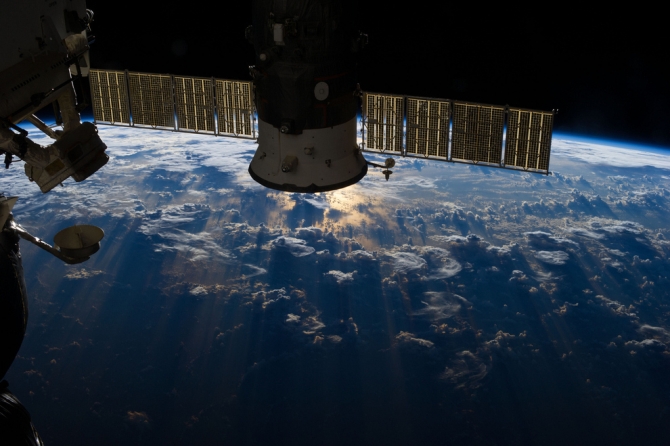
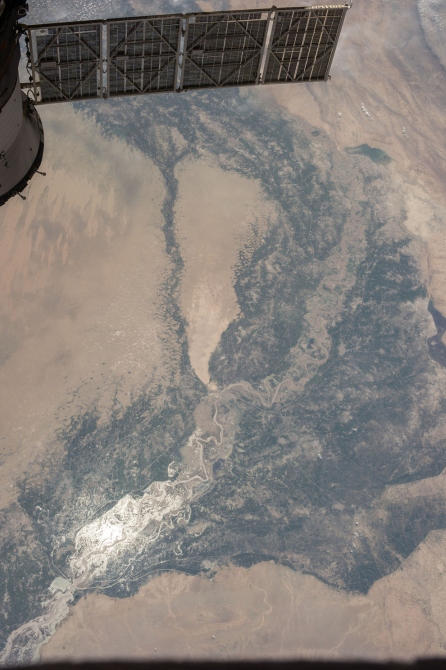
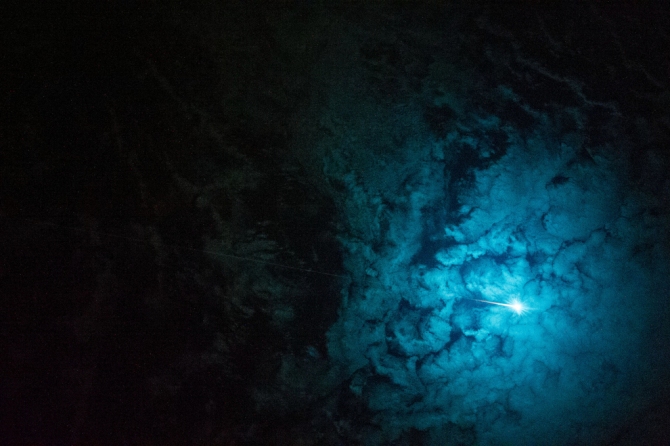


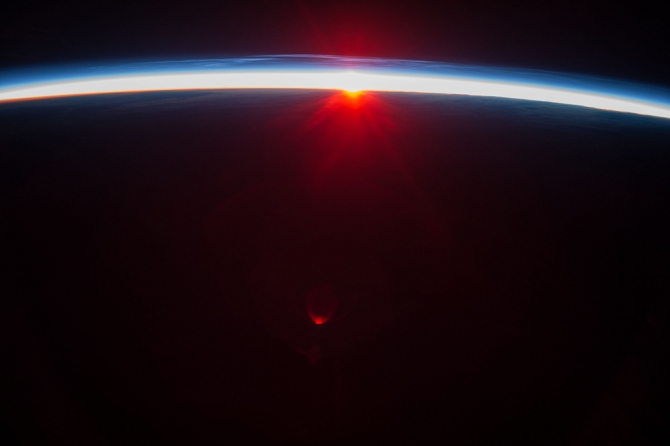



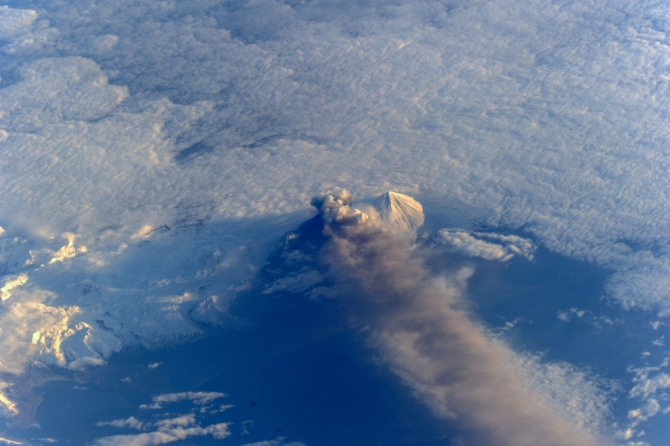

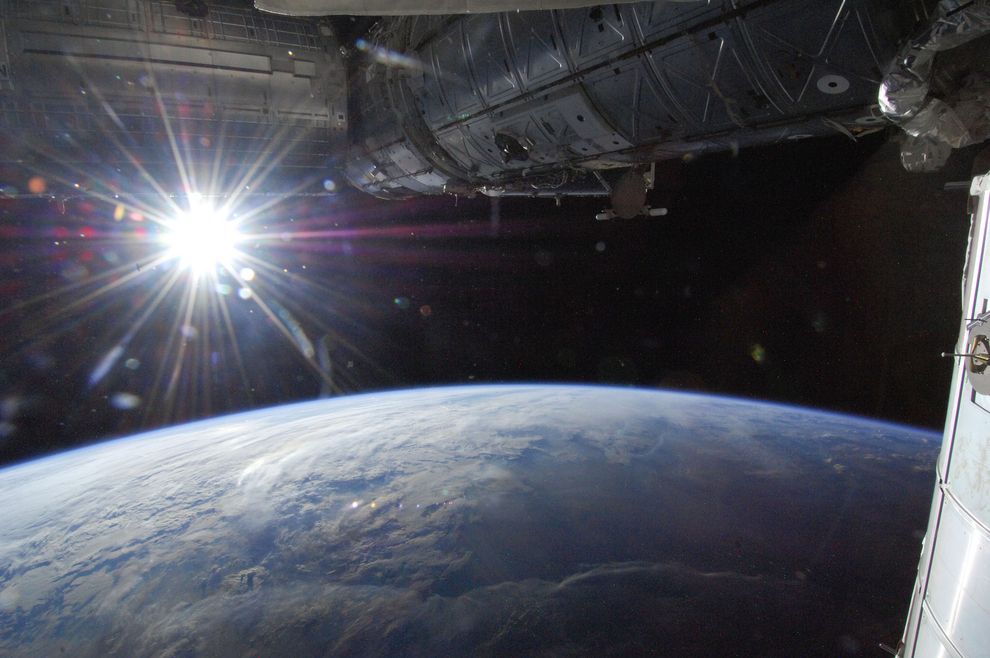
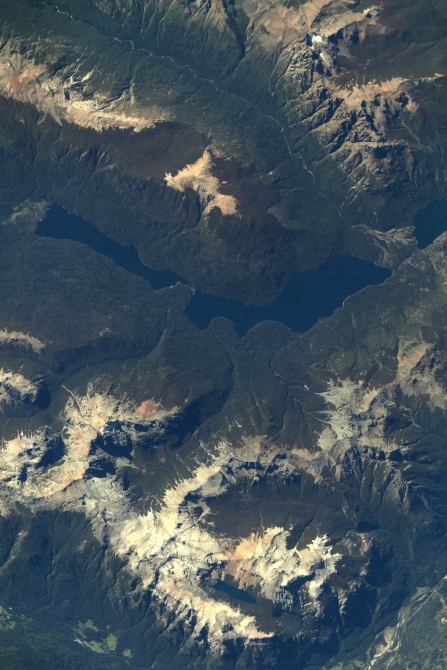

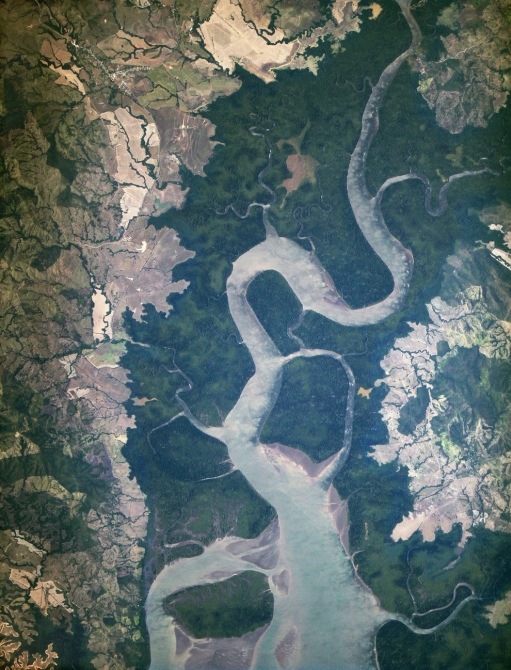
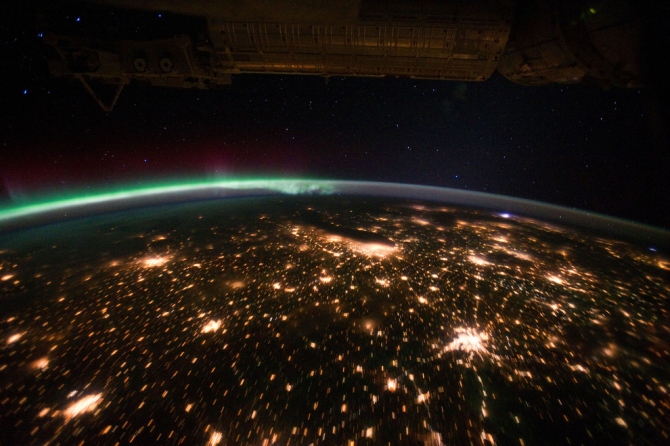


article